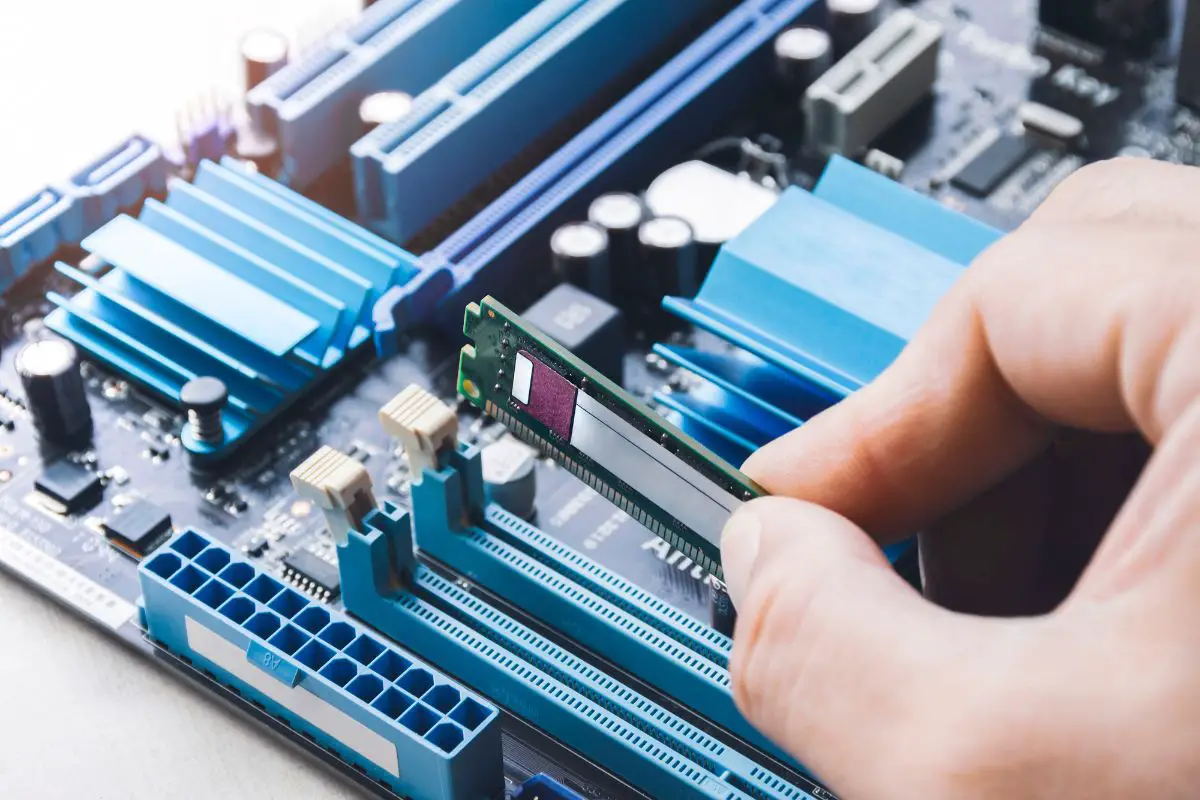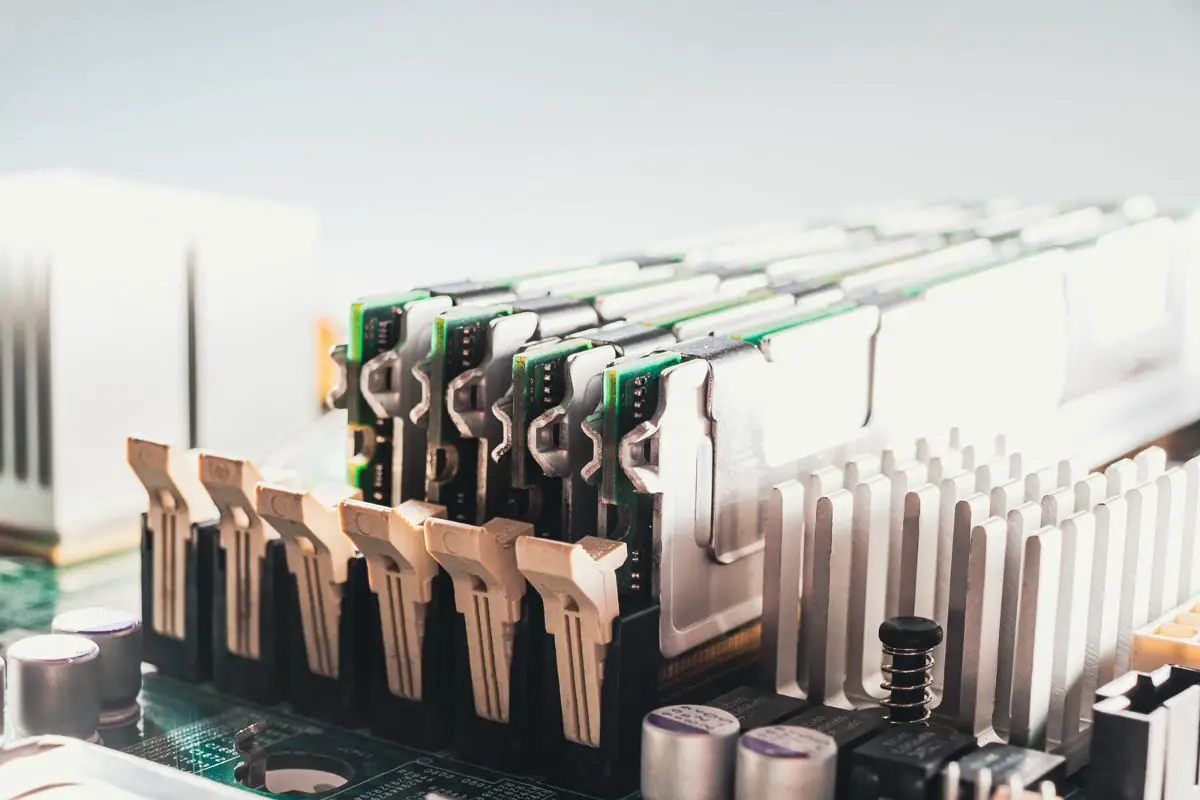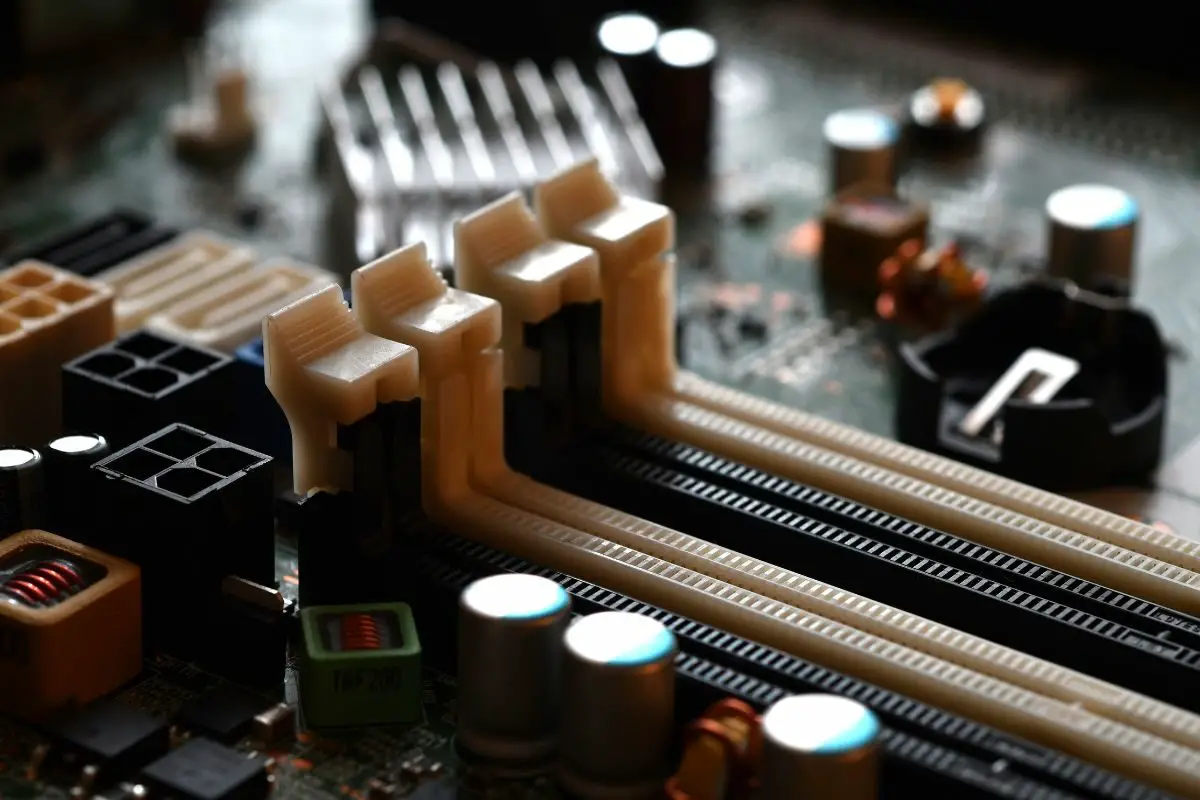
When you install RAM modules on your computer, you might wonder which RAM slots to use. It's common for motherboards to come with four RAM slots, so a general guideline is to start with the RAM slot farthest from the CPU, and then if you have a matching stick of RAM, skip one slot and insert it. It is important to do this to take advantage of the dual-channel feature that your motherboard and RAM have.
I remember when I was younger and building PCs. I used to stick RAM modules into the motherboard however I thought looked cleanest. Ever since I learned about dual-channel memory (and even quad-channel memory), I've always made sure to put my RAM sticks into the correct slots.
So, if you've been wondering which RAM slots to use on your motherboard, this article will show you everything that you need to know. Let's get right into it.
Contents
It's important to understand that with almost all modern motherboards, the RAM slots that you put RAM sticks in matter a lot.
Not only can it make installing other components like your CPU cooler easier, but it can provide a huge performance increase by properly utilizing your dual-channel memory.
However, I understand that all builds are different. Some motherboards have more RAM slots than others, and some PC builds have more RAM sticks than others. Because of this, I'll try to cover a few different scenarios to give you the best idea of what to do with your build.
However, before we get into this, always keep in mind that your motherboard manual will give you the best information when it comes to ideal placements for RAM modules. This can help you avoid sticking to single-channel speed when you have the hardware for dual-channel.

If you have only one RAM stick that you want to put in your motherboard, the truth is that it matters very little which RAM slot you put it in. You will probably get the same performance regardless. It will run in single-channel mode no matter what.
However, for the sake of convenience, I'd recommend that you fix the RAM stick in the slot farthest from your CPU socket.
The reason for this makes sense when you hear it. Having RAM in the slot closest to your CPU socket can sometimes get in the way of certain CPU coolers or can make them harder to put in.
Keeping the CPU's closest sockets free can save you from needing to deal with this.
If you have a motherboard with two RAM slots, all you've got to do is plug your memory modules into both of them.
The real head-scratching moment comes when you have four RAM slots and two RAM modules. Which are the correct slots to use to take advantage of dual-channel mode?
Your motherboard manual will give you more information on the exact pairs of RAM slots that will let you take advantage of a dual-channel configuration.
However, typically speaking RAM slots 1 and 3, and then 2 and 4 are the pairs that will let you take advantage of dual-channel memory. This means that once you insert your RAM sticks, there should be exactly one free RAM slot between them.
On some motherboards, you'll notice that the RAM slots that support dual-channel memory will be color-coded. For example, RAM slots 1 and 3 might be red, and RAM slots 2 and 4 might be black. This can make it easier to understand where to plug your two RAM sticks in.
In the odd case where you have three RAM sticks (or any odd number) and an even number of RAM slots, how do you proceed?
Well, the most common scenario would be three RAM sticks and four RAM slots. If this is the case, you start by putting two dual-channel memory sticks in two RAM slots that are compatible. Then fit the final RAM stick into any free RAM slot.
Supposing you have five RAM sticks and eight RAM slots, the process is rather similar. You'll make sure that you have two pairs of dual-channel memory taking up their proper RAM slots, and simply fit the lone RAM stick into any RAM slot left over.
If you have four RAM modules and four slots, all of them will end up occupied and there aren't necessarily any wrong slots.
However, you will simply want to make sure that you're taking advantage of any dual-channel memory sticks among the four.
If they are all identical, it doesn't matter where you put them.
If you've got two different pairs of dual-channel compatible memory sticks, make sure that each pair occupies either 1 and 3 or 2 and 4.

What do you do if the motherboard that you want to plug your RAM modules into has more than four slots? For instance, what if it is a motherboard with eight slots as some very high-end options have?
If this is the case, I highly recommend checking your motherboard manual as this can give you more information about the configuration of your board's RAM slots.
However, the rules are similar to a motherboard with four or fewer slots. Installing RAM in the slots farthest from the CPU is optimal. One stick can go anywhere and with two RAM sticks, one should be in the farthest slot and then there should be exactly one free RAM slot between it and the next.
With three RAM sticks, you can usually just stick them all right beside each other at the far end. However, if you have triple-channel memory, which is uncommon, you should check your motherboard manual to be sure of the right configuration.
With four RAM sticks, you can have them all together in the farthest RAM slots. You could also choose to space them out with a single free slot between each of your RAM modules.
However, in the case where you have quad-channel memory, you'll need to reference your motherboard's manual to be sure of the exact configuration to take advantage of this speed boost.
If your motherboard only has two slots in total, the truth is that there's not much to fret over. A single RAM stick can typically go anywhere you want it to, and if you have two sticks, you generally put them wherever you want if both RAM slots are specced identically.
There have been several mentions of "dual-channel memory" in this article, but if you haven't built that many PCs, you might not have an idea what that's meant to be.
First off, you need to understand that when you have one module plugged into a RAM slot on your mobo, it runs as single-channel memory no matter what. This basically means that you get the performance that is advertised.
However, when you have more than one stick installed, your computer can actually read from multiple RAM sticks at the same time.
When motherboards have two RAM modules being read simultaneously, that is dual channel memory. When there are four being read from at the exact same time, such a motherboard support quad-channel.
In rare cases, you may come across some mobos that support three RAM sticks being accessed simultaneously and this is triple channel memory.
When your motherboard is able to read and write from more than one RAM stick at the same time, it opens your system up to major performance boosts.

However, to read from multiple RAM modules at the same time, the sticks have to be placed in pre-determined positions, which is everything we've been talking about when it comes to the right place to install memory in your system.
One very important thing to keep in mind is that when trying to utilize multi-channel RAM, you want to make sure that each member in the pair of memory you're using is as close as it can be to the other.
In fact, the best way to ensure this is by buying a RAM kit. This is basically a pack of two or more sticks that are built and sold at the exact same performance levels, which makes them perfect for dual-channel or quad-channel installation.
That means each module in the RAM kit will have the same speed, same capacity, same latency, and so on, This makes it a lot more likely for it to work smoothly in dual-channel mode.
RAM with the same capacity and speed from different manufacturers will usually work perfectly in a dual-channel configuration, but you may experience some hurdles.
Let's say you have two 8GB sticks of RAM. One has a speed of 2400 MHz and the other is faster at 3200 MHz. Can you use them in a dual-channel configuration?
Or what if you put 8 GB and 16 GB memory in your dual-channel slots? Can those manage to work together?
The answer is yes, they can, but if they work properly, you are going to face a limitation.
No matter how many RAM sticks are in the setup, memory working in dual-channel, triple-channel, or quad-channel will be limited to the slowest specifications.
As an example, let's say you have an 8 GB 2133 MHz, 16 GB 3200 MHz, and 8 GB 2400 MHz setup of RAM in a triple-channel config. If they work without a hitch, how will the performance be?
Well, the slowest speed among the three is 2133 MHz, and the lowest capacity is 8 GB. The two faster modules will be limited to 2133 MHz and the 16 GB module will only have 8 GB being used in triple-channel mode.
So, while you get the advantage of a multi-channel config, you can lose some of the performance that your RAM normally has if your modules are mismatched.
This is why I highly recommend that you buy your RAM in RAM kits when building computers from scratch. This makes it certain that you get the intended performance when running them in a dual-channel or higher setup.
On a motherboard with four memory slots, you'll want to leave a single space between two modules as this will let you get dual-channel performance. A third one can go anywhere else, and a single stick is best placed farthest from the CPU. Your motherboard's manual will give you the most specific info on how to set things up though.
Keep in mind that dual-channel memory works best when the specs are similar. Otherwise, some of the memory may end up limited by the slower one(s).
Was this article able to show you how to physically set up your RAM for the best performance? If so, take a look at our other articles to learn more cool stuff.
